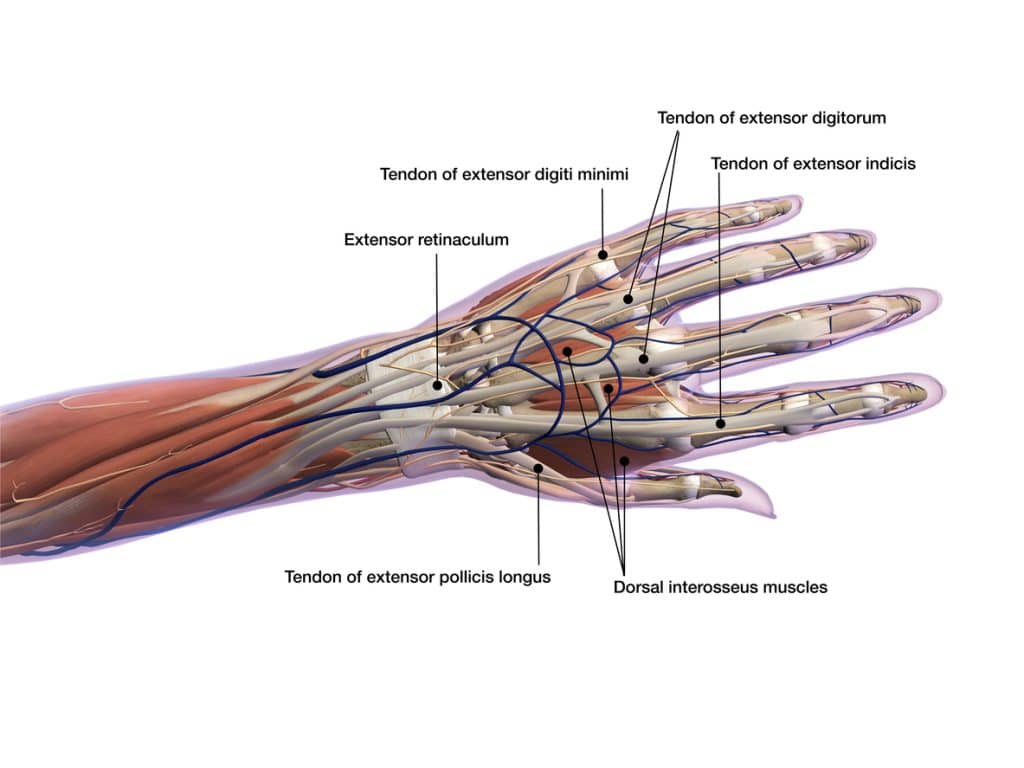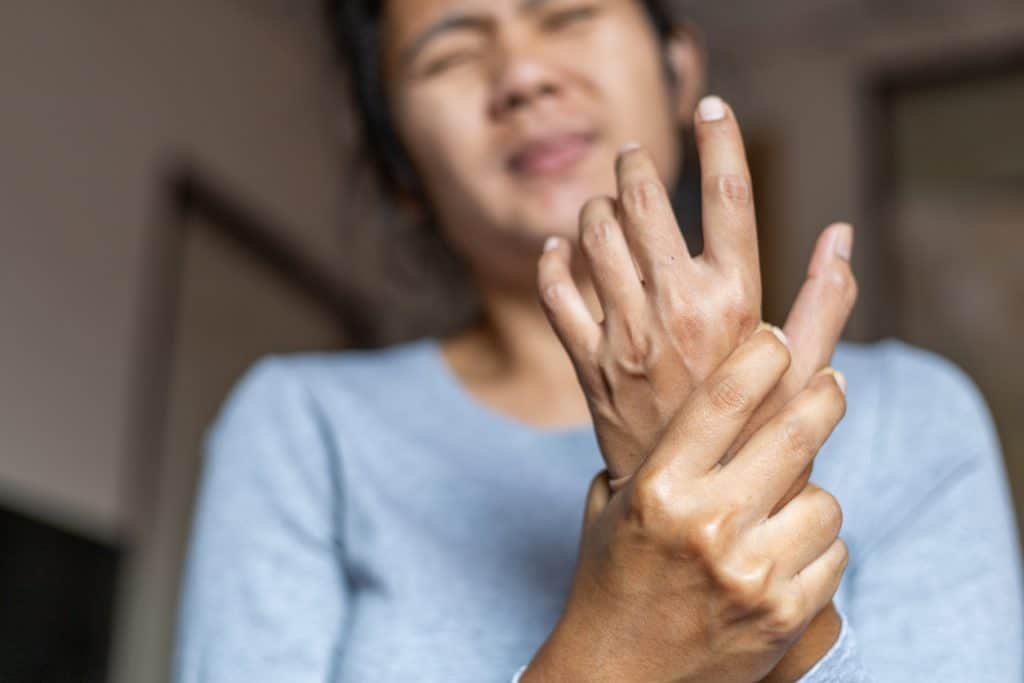Flexor Tendon Tear: Symptoms and Treatment Options
The flexor tendons of the hand and wrist are cord-like bands that connect the bones of the fingers and thumb to the muscles in the forearm. These strong and smooth tendons flex or bend your fingers and thumbs as you pick up or grip something.
Flexor tendons are like rubber bands. A complete flexor tendon tear is akin to cutting the rubber band and creating two disconnected ends. As a result of this disconnection, it is difficult or impossible to bend one or more of the joints of the affected finger or thumb.

A complete flexor tendon tear cannot heal independently and requires surgery. In a partial tear, where the “rubber band” isn’t completely severed, nonsurgical treatment may include splinting and therapeutic exercises.
The most common causes of flexor tendon tears are cuts on the palm side of fingers, hands, wrists, or forearms — or injuries that cause a finger or the thumb to be pulled violently away from the body.
What Causes a Flexor Tendon Tear?
The most common causes of flexor tendon injuries in the hand are:
- A cut or open wound across the palm side of the hand, often at the bend of a finger joint
- “Jersey finger,” an accident in which an athlete’s finger gets caught in another athlete’s jersey and violently pulled away, separating the tendon from the bone
- Engaging in sports in which hand and grip strength are essential (like rock climbing) can cause a tendon tear
- Health conditions such as rheumatoid arthritis (RA), in which tendons and muscles are weakened and more susceptible to tearing
In addition to tearing flexor tendons in the hand, you can also suffer from a torn extensor tendon. When extensor tendons tear, it will be difficult for you to open your hand or straighten your fingers. You also have flexor tendons in other parts of your body. Golfer’s elbow is an example of an injury to the flexor tendons in the elbow.
Symptoms of a Flexor Tendon Tear

Symptoms of a possible flexor tendon tear include:
- A cut or open wound across the palm side of the hand, wrist, or forearm
- Inability to partially or fully bend your finger or thumb
- Pain when attempting to bend your finger or thumb
- Tenderness or numbness in your finger or thumb
If you have any of these symptoms, see your orthopedic hand and wrist specialist as soon as possible. They will evaluate your ability to bend and straighten your fingers, test the sensation and blood flow in your fingers or thumb, and may order an X-ray to examine the bones of your hand, wrist, or forearm.
Non-Surgical Treatment
Sometimes a tendon will suffer from a partial (rather than a complete) tear. It may be possible to bend the finger with a partial tear, but you will likely be unable to bend it entirely, or doing so will be excruciating.
In these instances, your orthopedic hand doctor may prescribe a splint and physical therapy to protect and strengthen the injured tendon while it heals.
Emergency Treatment
If the tendon injury results from a cut, compress the injured area to slow the bleeding. Clean the wound, apply an ice pack, and elevate your hand above your heart. For severe cuts, go to the ER or urgent care. You may need antibiotics, a tetanus shot, or immediate surgery.
If a blood vessel is cut alongside the injured flexor tendon, the finger or thumb will have no blood supply. You will require immediate surgery.
If blood vessels are intact but the tendon is completely torn or cut (where its two ends are not touching), the injury will not heal by itself and should be repaired by an orthopedic hand surgeon within 7 to 10 days.
Surgical Treatment
Whether immediate or within ten days, surgery is the only means by which a finger or thumb with a complete flexor tendon tear can regain its ability to bend. The two severed ends of the tendon are reconnected and sutured together during surgery. Surgery may take place under local or general anesthesia.

Post-surgery, your orthopedic surgeon may cast or splint your hand. This holds it in a bent position and keeps tension off the tendon. Your orthopedic doctor will tell you when it’s time to begin light therapeutic exercises to keep the tendon gently moving.
Flexor tendon injuries can be challenging to treat, so following the instructions of your orthopedic hand surgeon and physical therapist is imperative. It takes two to four months to heal injured tendons sufficiently and regain full use of your hand without restrictions. Long-term treatment aims to avoid reinjuring the tendon while regaining motion and function.
Healing From Flexor Tendon Surgery
Your hand will feel stiff as it heals, but you’ll gain mobility and flexibility as you strengthen the tendon with therapy. Sometimes scar tissue forms and requires a second surgery. Follow your orthopedic doctor’s guidance and maintain your follow-up appointments.
Contact your orthopedic hand surgeon immediately if you experience either of the following:
- You feel the tendon snap or notice the finger or thumb is once again unable to bend after initial improvement. Complete flexor tendon tears or cuts are serious injuries. The repair can break during its initial stages of healing due to the force flexor tendons carry.
- The injured finger or thumb loses its ability to move without assistance. Scar tissue formation can cause the tendon to “stick”. Additional surgery or more hand therapy may be necessary to improve movement.
If you are experiencing issues with your hand or fingers and have questions for our orthopedic specialist, please contact us. We’re happy to help you schedule a consultation with our hand and wrist specialist.
Leave a Reply